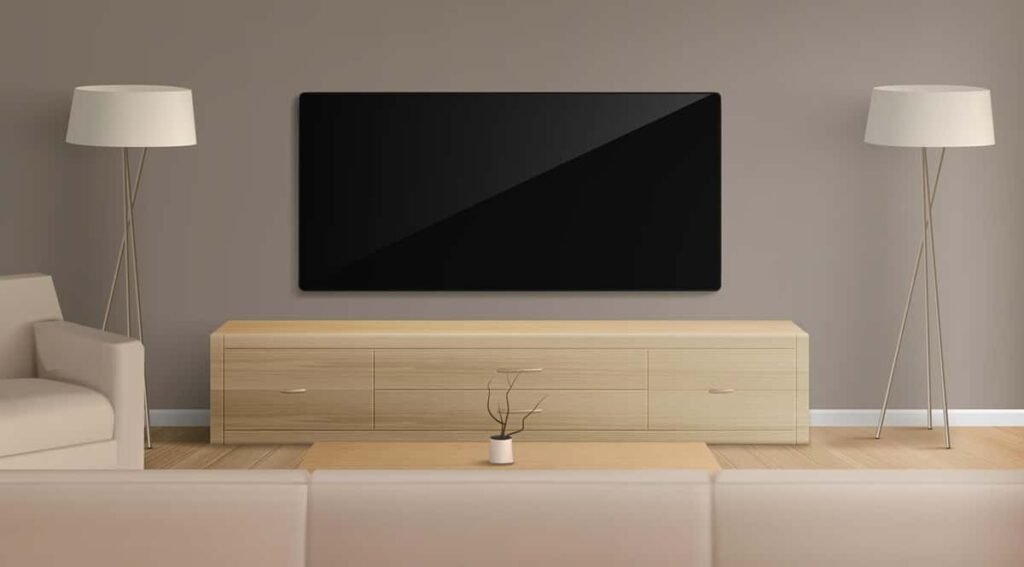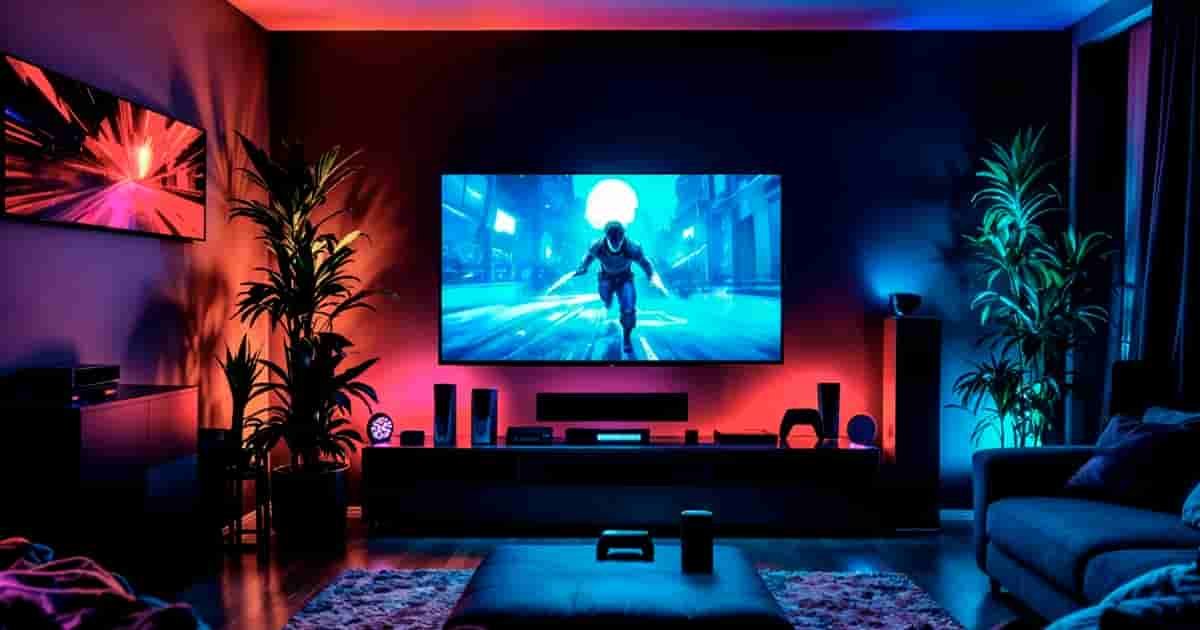Beyond the Brightness: Essential Features to Look in LED TV, When Buying an LED TV
LED TVs have become ubiquitous in our homes, offering a vibrant picture and sleek design that elevates our entertainment experience. But with a market flooded with options, each boasting a unique set of features, choosing the right LED TV can feel overwhelming. It’s no longer just about the size of the screen; understanding the technical specifications and features will ensure you select a TV that truly meets your needs and provides the best possible viewing experience.
Essential Features to Look in LED TV

This comprehensive guide will delve into the key features you should consider when buying an LED TV, helping you cut through the jargon and make an informed decision. We’ll cover everything from display technology and resolution to connectivity options and smart features, providing you with the knowledge to navigate the often-complex world of LED televisions.
1. Screen Size and Viewing Distance:
This is the most obvious, yet arguably the most important, consideration. The optimal screen size depends primarily on your viewing distance – the distance between your TV and your seating area. A general rule of thumb is:
- Viewing Distance: The ideal screen size should be approximately 1.5 to 2.5 times the diagonal screen size.
For example:
- If you sit 6 feet away (72 inches), a 43-inch to 55-inch TV would be a good fit.
- If you sit 8 feet away (96 inches), a 55-inch to 65-inch TV would be more suitable.
- For even larger viewing distances, you might consider a 75-inch or larger screen.
Don’t underestimate the importance of this factor. A TV that is too small will feel distant and less immersive, while one that is too large can strain your eyes and make it difficult to see the entire picture comfortably.
2. Resolution: The Key to Sharpness and Detail
Resolution refers to the number of pixels that make up the image on the screen, measured in width x height. Higher resolution equates to a sharper, more detailed picture. Here’s a breakdown of the common resolution types you’ll encounter:
- HD (720p): 1280 x 720 pixels. While still available, 720p is generally considered outdated for modern TVs, especially for larger screen sizes. The image quality will appear less sharp and detailed than higher resolutions.
- Full HD (1080p): 1920 x 1080 pixels. A good option for smaller screen sizes (32-43 inches) and older content, but increasingly being replaced by 4K. 1080p TVs are often more affordable.
- 4K Ultra HD (2160p): 3840 x 2160 pixels. The current standard for most new TVs. 4K offers significantly more detail and clarity than 1080p, making it ideal for larger screens and enjoying high-quality content from streaming services and Blu-ray discs. Look for TVs that can upscale lower-resolution content to near-4K quality.
- 8K Ultra HD (4320p): 7680 x 4320 pixels. The highest resolution currently available for consumer TVs. 8K offers even greater detail than 4K, but content is still limited. 8K TVs are typically more expensive and best suited for very large screen sizes and viewers who want the absolute best picture quality.
Which resolution is right for you? 4K is generally recommended for most buyers. It provides a noticeable improvement in picture quality over 1080p and is becoming increasingly affordable. If you plan on buying a very large TV (65 inches or larger), 4K is practically essential. 8K is an option for early adopters who want the cutting-edge technology, but the content availability and high price point make it less practical for most consumers.
3. Display Technology: LED vs. OLED and QLED
While most TVs are marketed as “LED TVs,” it’s crucial to understand that LED technology actually refers to the backlighting system. The core display technology can vary significantly. Here’s a quick overview:
- LED-backlit LCD (LED TVs): These TVs use an LCD panel illuminated by LED backlights. They are the most common and affordable type of TV. The LED backlighting can be placed in different configurations:
- Edge-lit: LEDs are placed along the edges of the screen, making the TV thinner. However, this can lead to less uniform brightness and potential “light bleed.”
- Direct-lit: LEDs are placed directly behind the screen, providing more uniform brightness.
- Full-Array Local Dimming (FALD): A more advanced direct-lit system where the LEDs are divided into zones that can be dimmed or brightened independently. This improves contrast and black levels. Look for TVs with a higher number of dimming zones for better performance.
- OLED (Organic Light Emitting Diode): OLED TVs use self-emissive pixels that can turn on and off independently. This results in perfect blacks, infinite contrast, and incredibly vibrant colors. OLED TVs generally offer superior picture quality compared to LED TVs, but they are typically more expensive. A potential, but increasingly less common, concern with OLED technology is “burn-in,” where static images displayed for extended periods can leave a permanent mark on the screen.
- QLED (Quantum Dot LED): QLED TVs are LED-backlit LCD TVs that use quantum dots to enhance color and brightness. Quantum dots are tiny nanoparticles that emit specific colors of light when illuminated. QLED TVs offer excellent color volume, high peak brightness, and good overall picture quality. They are often positioned as a competitor to OLED, offering a brighter picture but not quite matching the perfect blacks of OLED.
Choosing the right display technology:
- Budget-conscious buyers: LED TVs with direct-lit or full-array local dimming offer a good balance of price and performance.
- Picture quality enthusiasts: OLED TVs are the top choice for those who prioritize perfect blacks, infinite contrast, and stunning picture quality.
- Bright room environments: QLED TVs excel in bright rooms due to their high peak brightness and excellent color volume.
4. High Dynamic Range (HDR): More Than Just Brightness
HDR is a technology that expands the range of colors, contrast, and brightness that a TV can display. This results in a more realistic and immersive picture with greater detail in both the brightest and darkest areas of the image. Here are some key HDR formats:
- HDR10: The most common HDR format, supported by most HDR-compatible TVs and streaming services.
- Dolby Vision: A more advanced HDR format that uses dynamic metadata to optimize the picture on a scene-by-scene basis. Dolby Vision offers potentially better picture quality than HDR10.
- HDR10+: Similar to Dolby Vision, HDR10+ also uses dynamic metadata, but it is an open standard and royalty-free.
- HLG (Hybrid Log-Gamma): Primarily used for broadcast television.
What to look for: Make sure the TV supports HDR. Ideally, choose a TV that supports both HDR10 and Dolby Vision for maximum compatibility with HDR content. A TV with a higher peak brightness and wider color gamut will generally deliver a more impactful HDR experience.
5. Refresh Rate: Smooth Motion for Fast-Paced Action
Refresh rate refers to the number of times per second that the TV screen updates the image, measured in Hertz (Hz). A higher refresh rate results in smoother motion, which is particularly important for fast-paced content like sports and action movies.
- 60Hz: A standard refresh rate for basic TV viewing. It may exhibit some motion blur during fast action scenes.
- 120Hz: A higher refresh rate that significantly reduces motion blur, providing a smoother and more realistic picture. Highly recommended for gamers and viewers who frequently watch sports or action movies.
Beware of Marketing Gimmicks: Manufacturers often use proprietary terms like “Motion Rate” or “Clear Motion Rate” that don’t accurately reflect the true refresh rate. Always check the specifications to confirm the native refresh rate of the panel.
6. Connectivity: Ports and Wireless Options
Having a variety of ports and wireless connectivity options is crucial for connecting your TV to various devices and accessing online content. Here are the key ports to consider:
- HDMI (High-Definition Multimedia Interface): The standard connection for connecting Blu-ray players, gaming consoles, and streaming devices. Look for HDMI 2.1 ports, which support higher resolutions and refresh rates (including 4K @ 120Hz) for next-generation gaming consoles.
- USB (Universal Serial Bus): For connecting external hard drives, flash drives, and other devices.
- Ethernet: For a wired internet connection.
- Wi-Fi: For wireless internet connectivity. Look for TVs that support Wi-Fi 5 (802.11ac) or Wi-Fi 6 (802.11ax) for faster and more reliable wireless performance.
- Digital Audio Output (Optical or Coaxial): For connecting to a soundbar or external audio system.
- Headphone Jack: For connecting headphones.
7. Smart TV Features: Apps, Voice Control, and More
Most modern LED TVs are “smart TVs,” meaning they come with built-in operating systems and access to streaming services, apps, and other online content. Here are some key smart TV features to consider:
- Operating System: Popular smart TV operating systems include:
- Android TV/Google TV: A versatile and user-friendly operating system with a vast app store and Google Assistant voice control.
- Tizen (Samsung): A fast and responsive operating system with a clean interface.
- WebOS (LG): A user-friendly operating system with a unique card-based interface.
- Roku TV: A simple and affordable operating system with a wide selection of streaming channels.
- App Support: Make sure the TV has access to the streaming services you use most often, such as Netflix, Amazon Prime Video, Hulu, Disney+, and YouTube.
- Voice Control: Many smart TVs come with built-in voice assistants like Google Assistant or Amazon Alexa, allowing you to control the TV with your voice, search for content, and control other smart home devices.
- Screen Mirroring: The ability to mirror the screen of your smartphone or tablet to the TV. Common technologies include Chromecast built-in (for Android devices) and AirPlay 2 (for Apple devices).
8. Audio Quality: Built-in Speakers vs. External Audio System
While TV manufacturers are improving the audio quality of built-in speakers, they often can’t match the performance of a dedicated sound system. If you are serious about your audio experience, consider investing in a soundbar, surround sound system, or AV receiver.
- Built-in Speakers: Check the wattage of the built-in speakers. Higher wattage generally indicates louder sound.
- Audio Technologies: Look for TVs that support audio technologies like Dolby Atmos or DTS:X, which provide a more immersive and spatial audio experience.
- eARC (Enhanced Audio Return Channel): An HDMI feature that allows you to pass high-quality audio from the TV to a soundbar or AV receiver.
9. Design and Aesthetics:
The design of your TV can significantly impact the overall look and feel of your living room. Consider these factors:
- Bezel Size: A thinner bezel (the frame around the screen) can create a more immersive viewing experience.
- Stand Design: Choose a stand design that complements your existing furniture and provides adequate stability.
- Mounting Options: If you plan to mount the TV on a wall, make sure it is VESA-compatible and that you have the necessary mounting hardware.
- Cable Management: Look for TVs with built-in cable management features to keep your cables organized and out of sight.
10. Brand Reputation and Warranty:
Choosing a reputable brand can provide peace of mind and ensure that you receive a quality product and reliable customer support. Research different brands and read reviews from other customers before making a purchase. Pay attention to the warranty offered by the manufacturer. A longer warranty typically indicates greater confidence in the product’s durability and reliability.
Conclusion:
Buying an LED TV is a significant investment. By carefully considering the features outlined in this guide, you can make an informed decision and choose a TV that perfectly suits your needs, budget, and viewing preferences. Don’t just focus on the price tag or the size of the screen; understanding the technology and features will ensure you get the best possible viewing experience for years to come. Remember to visit local electronics stores to compare different models in person and ask questions to sales representatives. Happy viewing!
Also Read,


